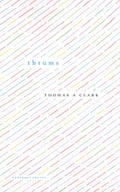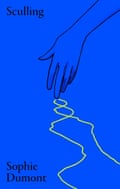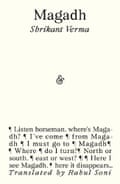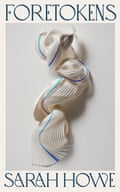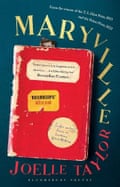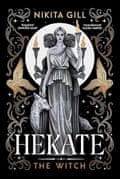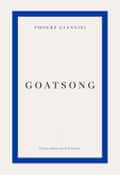The Owl and the Nightingale, translated by Simon Armitage; Winter Recipes from the Collective by Louise Glück; Deep Wheel Orcadia by Harry Josephine Giles; Five Books by Ana Blandiana; The sea is spread and cleaved and furled by Ahren Warner
Fri 1 Oct 2021 12.00 BST
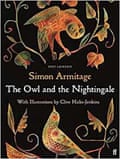
The Owl and the Nightingale translated by Simon Armitage (Faber, £14.99)
This new work follows Simon Armitage’s earlier versions of Pearl and Sir Gawain and the Green Knight in making the creative case for the readability of long Middle English poems. The Owl and the Nightingale is a comic disputation in 900 rhyming couplets: the joke – that the different orders of bird lack mutual respect, just like humans from different communities – has plenty of time to wear thin, especially as this translation has to work with the poem’s rural setting, which could appear to contemporary perspectives to lack edge. That we want to keep reading is thanks largely to Armitage’s way with language. Plain-speaking and laconic, it retains the metre and rhyme scheme of the original, while making it sound easy: it is not. This thoroughly poetic feat, rather than Faber’s somewhat twee illustrations or the arch self-references, ensures this graceful, elegant translation is a success.
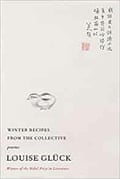
Winter Recipes from the Collective by Louise Glück (Carcanet, £12.99)
A slim volume of just 15 pieces, but like all the Nobel laureate’s work, it punches above its apparent weight. Glück has always been a fastidiously exact truth-teller; her lucid poems pretend to a plainness that’s really the simplicity of something more fully worked out than the rest of us can manage. It is a hallmark of late, great writing, as is the courage to go into the dark: “Downward and downward and downward and downward / is where the wind is taking us.” This new collection once again examines close relationships without the sweetener of correct sentiment, recording the universal stages of human life through a woman’s experience. We’re back in the stylised, half-dreamed Glück landscapes that are rural equivalents of an Edward Hopper painting, and back with her astonishing poetry, as “the world goes by, / All the worlds, each more beautiful than the last”.
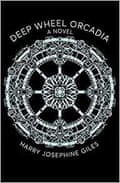
Deep Wheel Orcadia by Harry Josephine Giles (Picador, £10.99)
Deep Wheel Orcadia is a book of astonishments. The first is that this is a verse novel: a kind of storytelling that mainstream poetry for adults often resists. What such resistances overlook is just how much the form can contain, given poetry’s capacity to say many things at once. It threads together questions of identity and belonging, alongside examinations of deep space and Orkney, in a single concisely yet scintillatingly told tale. Giles also makes language shift like the stormy Orcadian seas. Every page of this bilingual book contains both conventional stanzaic verse in “a poetic register of the Orkney tongue”, and a prose-poem version where the same material is retold in an idiomatic English that packs in, and unpacks, the many meanings of the Orcadian. When, for example, “stoor” becomes “stormstrifestrainspeeddust”, or “Øyvind birls a pod in his lang / fingers an waatches the ship link” is rendered as “Øyvind whirlrushdancespins a pod in his long fingers and watches the ship glidetorestconnect”, English itself is returned to the reader as “something strange and rich”.
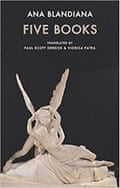
Five Books by Ana Blandiana, translated by Paul Scott Derrick and Viorica Patea (Bloodaxe, £14.99)
The Romanian Ana Blandiana is one of Europe’s greatest living poets, and she’s well served by this substantial volume containing five previously untranslated collections. Ranging across her writing life, they create a layered portrait of a complex yet consistent poetic identity. The collection opens with poems of resistance to the Ceausescu regime’s tyranny, which in 1984 electrified Romanian society and became its first samizdat literature. There are also two collections written under Ceausescu, in which women’s embodied experiences become overlaid with and symbolise national experience. The Architecture of Waves, published in 1990 when Blandiana was 48, was her first book to appear uncensored. Also included here are two collections from the past five years, one a book-length exequy for her husband. Its title, Variations on a Given Theme, economically encapsulates the repetitive nature of mourning: and economy and focus are the hallmarks of this unflinching work of witness, to realities both intimate and international.
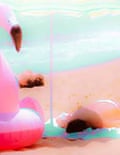
The sea is spread and cleaved and furled by Ahren Warner (Prototype, £12)
The brilliant writer and artist Ahren Warner makes a welcome return with this verse sequence with photographs. Warner’s fiercely intelligent earlier collections were often “furled” tight indeed, as if clenched against the forces of idiocy or blandness. Now, as he reports on a wild odyssey through the club scene of southeast Europe and beyond, his writing expands with conversation and self-talk, incident and image. Decadent but full of self-disclosure, it’s at once sexy, intellectual and self-aware. “She’s not here, i say. i know, i say, but the tears streaking my face are real, i say //and so is the way my neurons are shaking with something i have, in the past, called, love.” This story of an affair is a messy, disturbing triumph in the traditions of Arthur Rimbaud and John Berryman: how Le bateau ivre or The Dream Songs would read if they’d been written today. It too could be the anthem of a generation.



